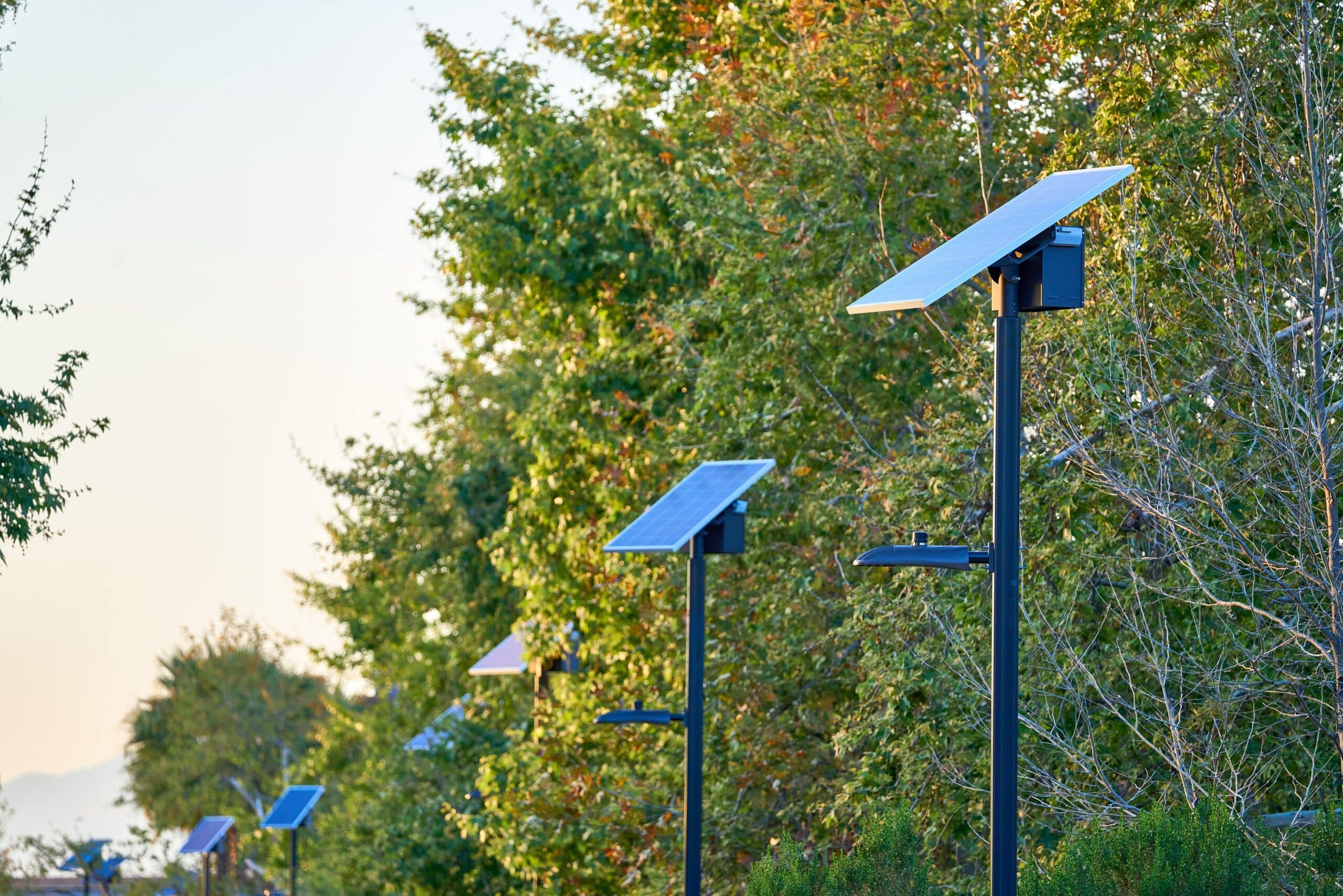Educational 20 January 2023
Reducing Waste and Carbon Footprint: The Benefits of Recycling Materials in Solar Streetlamp Manufacturing
Solar streetlamps are a sustainable lighting solution that provides a wide range of benefits, including energy savings, cost savings, and reduced carbon emissions. However, the ecological benefits of solar streetlamps don’t stop there. Thanks to the recycling of materials used in solar streetlamps, they offer an end-to-end ecological solution that benefits both the environment and the economy.

Solar streetlamps are made up of several components, including the solar panel, battery, LED light, and supporting structure. Each of these components is made up of various materials that can be recycled and reused, reducing the need for new materials and reducing the environmental impact of the manufacturing process.
One of the most significant advantages of solar streetlamps is that they don’t require any external power source. They generate their energy from the sun, which means that they don’t rely on non-renewable resources such as coal, oil, or natural gas. This means that solar streetlamps are a more sustainable and eco-friendly lighting solution compared to traditional streetlights that rely on the grid for their power.
In addition to their sustainable energy source, solar streetlamps are also designed to last for many years. This means that they require minimal maintenance and replacement, reducing the need for new materials to be manufactured and reducing the waste generated by the disposal of old streetlights. However, even the most durable solar streetlamps eventually end their useful life.
At this point, the various components of the solar streetlamps can be recycled, providing an end-to-end ecological solution. The solar panel, battery, and LED light can all be recycled, with the materials being used to manufacture new solar streetlamps or other products.
The solar panel is made up of several materials, including silicon, glass, and aluminum. These materials can be separated and recycled, with the glass and aluminum being used to manufacture new solar panels. The silicon can be purified and reused in the manufacturing of semiconductors, which are used in a wide range of electronic devices.
The battery used in solar streetlamps is typically a lithium-ion battery, which is widely used in consumer electronics. Lithium-ion batteries can be recycled, with the lithium, cobalt, and other materials being reused in the manufacturing of new batteries. This reduces the need for new materials to be mined and processed, reducing the environmental impact of battery production.
The LED light used in solar streetlamps is also recyclable, with the various components being separated and reused. The LED chip can be reused in the manufacturing of new LED lights, while the aluminum housing can be melted down and reused in the manufacturing of new products.
In addition to the environmental benefits of recycling materials used in solar streetlamps, there are also economic benefits. Recycling reduces the need for new materials to be manufactured, which reduces the cost of raw materials. This, in turn, reduces the cost of manufacturing solar streetlamps and makes them more affordable for consumers and municipalities.
Furthermore, recycling creates jobs in the recycling and manufacturing industries. As more solar streetlamps are installed, the demand for recycling and manufacturing services will increase, creating new jobs and boosting local economies.
Choosing Sol by Sunna Design for your solar lighting needs is an excellent choice for anyone looking to reduce their waste and carbon footprint. As the title of the article suggests, we are committed to reducing waste and carbon emissions by recycling materials in our solar streetlamp manufacturing process.
Sol by Sunna Design uses high-quality, durable materials in their solar streetlamp manufacturing process, ensuring that our products last for many years. However, when our products do reach the end of their useful life, Sol by Sunna Design ensures that the materials are recycled and reused in the manufacturing of new solar streetlamps or other products. This closed-loop manufacturing process ensures that our products have an end-to-end ecological solution, reducing waste and carbon emissions.
In addition to our commitment to recycling and sustainability, Sol by Sunna Design offers a wide range of high-quality solar lighting solutions. Our products are designed to be efficient, reliable, and cost-effective, making the right choice for anyone looking to save on energy costs while reducing their carbon footprint.
Sol by Sunna Design’s solar streetlamps use LED technology, which is more energy-efficient than traditional lighting solutions. This means that our products use less energy, reducing the amount of carbon emissions produced during the manufacturing process and the product’s useful life.
Sol by Sunna Design’s solar streetlamps are designed to be easy to install and maintain. This means that municipalities and other organizations can install their products quickly and easily, reducing the time and resources required for installation and maintenance. Finally, Sol by Sunna Design is committed to providing excellent customer service. By work closely with our customers to ensure that we meet your specific needs, providing customized solutions to ensure maximum efficiency and cost savings.
In conclusion, Sol by Sunna Design is an excellent choice for anyone looking to reduce our waste and carbon footprint while enjoying the benefits of solar lighting. Our commitment to sustainability and closed-loop manufacturing processes ensures that our products have an end-to-end ecological solution. Our high-quality, efficient, and cost-effective products, combined with our commitment to excellent customer service, make us an excellent choice for municipalities, organizations, and individuals looking for sustainable lighting solutions.
